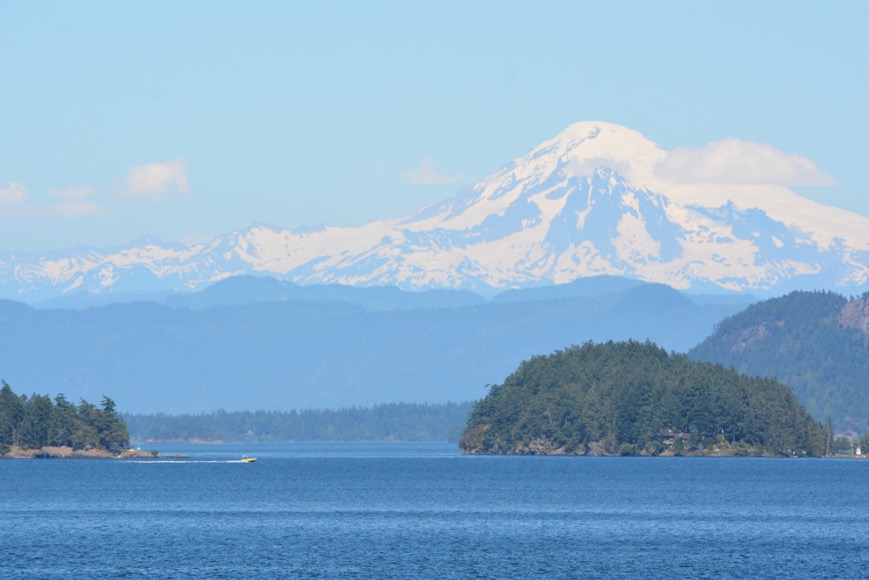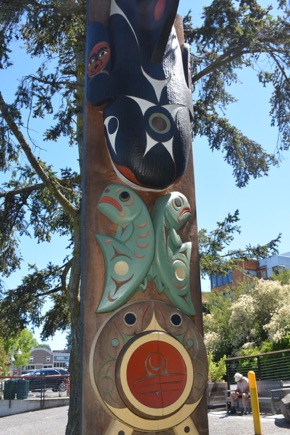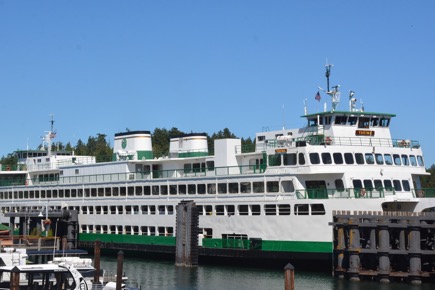Exploring the islands
23/06/21 02:21

For many centuries the islands off of the coast of the Pacific northwest were home to the Coast Salish people. The language they spoke i now called Norther Straits. They lived is small villages scattered around the coastal areas of the mainline and on the large and small islands now known as the San Juans as well as on Vancouver and Whidbey Islands. Two features of their environment were key to their lives: the abundant fish of the sea, especially salmon, and the giant trees, especially cedar. Fishing and working with wood were two time-honored skills.

The other thing that they made from cedar logs were the canoes that were a necessary part of their lives. They crafted large and small boats, usually with a distinctive bow to handle the ocean waves. The canoes were capable of hauling heavy loads, covering the distances between the islands, and provided a stable platform for fishing. They rolled for chinook and coho salmon. They set reef nets for sockeye and pink salmon. They fished the ocean banks for halibut and the rocky shores for lingcod and rockfish. Their diets were not only fish, however, the islands yielded deer to the hunters. The shores provided shellfish. They knew where to collect berries and harvest camas. Over the centuries they learned to set fires to prairie areas to limit the encroachment of the forest and keep the meadows productive for camas. Their small numbers made lived abundantly on the land and their practices left a legacy of sustainable stewardship of their world.
These days, only a remnant of the former populations of Coast Salish people remain. They suffered from multiple pandemics of illness introduced by explorers and settlers. Eventually the settlements encroached on their traditional lands and the loggers cut some of the most productive forests. Different bands of indigenous people were small enough that they didn’t gain the recognition of the federal government that was given to larger plains tribes. Fewer and fewer people were able to live on the islands, displaced by settlers. Traditional skills such as the making of tule mats and weaving dog wool and duck down blankets were lost. Knowledge of canoe design and construction, handed down from generation to generation for centuries, was lost.
All around the area there are signs of the rich culture that the Coast Salish people shared. Carved and painted poles and posts and beams remain in parks and other areas. Local museums have preserved some of the canoes and in recent years, a revival of the traditions of carving and paddling canoes has provided a new view of the traditional ways of living. Traditional canoes have covered distances of hundreds of miles along the coast as far north as Alaska.
As we explore this new to us home, we have had a few opportunities to visit some of the islands. Fildalgo, Whidbey and Camano Islands have bridges connecting them to the mainland. Guemes and Lumi Islands are accessible with short rides on the ferry. Washington State Ferries provide regular service to many other islands off of the coast. Yesterday, in celebration of our wedding anniversary, we walked onto the ferry to Friday Harbor on San Juan Island. The day was warm and sunny. It was a good day for an exploration. The community of Friday Harbor is located right next to the docks, so we had no need for a car, though the ferries we rode had two decks for automobiles and trucks that regularly make the passage between the islands. Tourism is an important business on the islands and we had no trouble finding fun shops to explore and enjoyed hand-battered fish and chips from a stand for our lunch. Even hiking up some of the steep streets didn’t full work off the large lunch so we decided not to sample the ice cream shops, but noted that there are at least 72 flavors of ice cream available within a very short walk from the ferry terminal. After our return trip that featured a short stop at Lopez Island, we allowed ourselves a bit of blackberry ice cream from a shop in Anacortes.

Coastal and inter island navigation required knowledge of the tides. The tidal current is very strong, faster than one can paddle a canoe in some places at some times of the day. Indigenous paddlers learned to use the movement of the tides to speed them on their way.
I have much to learn about this new place where we are living and the people who lived here long before we arrived. I have made several boats out of cedar, using very different techniques than those who burned and carved the traditional canoes of this region. Like them, however, I have developed an affinity for the use of the wood and a sense of responsibility to avoid wasting this precious gift of nature.
As has been the case in the other places we have lived, there is much to learn from those whose ancestors lived here long ago.
